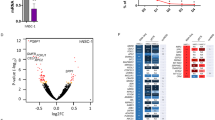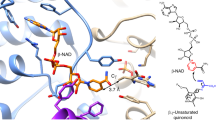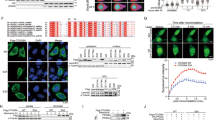Abstract
The role of microsomal NADPH:cytochrome P450 reductase (P450 reductase) and cytosolic NAD(P)H:quinone oxidoreductase 1 (NQO1 or DT-diaphorase) in the mutagenicity of benzo(a)pyrene-3,6-quinone (BP-3,6-Q) was studied using supF tRNA gene as the mutational target. pUB3 carrying the supF tRNA gene upon transformation into the Escherichia coli ES87 cells exhibited a spontaneous mutation frequency of 0.62 x 10(-6). Chemical modification of the pUB3 DNA with BP-3,6-Q caused a fourfold increase in the mutation frequency, compared with the spontaneous mutations. P450 reductase catalysed metabolic activation of BP-3,6-Q into reactive products (semiquinone and reactive oxygen species), which caused a further increase in the mutation frequency to eightfold over spontaneous mutations. Oxygen radical scavengers (SOD and catalase) blocked the P450 reductase-activated BP-3,6-Q-induced stimulation of mutations. This indicates that redox cycling of the semiquinone leading to the generation of reactive oxygen species (ROS) was directly responsible for the increased mutation frequency of P450 reductase-activated BP-3,6-Q. Analysis of the mutation spectra revealed that P450 reductase-activated BP-3,6-Q showed a significantly higher preference for frameshift mutations, particularly deletions, compared with the spontaneous mutations and the mutations generated by benzo(a)pyrene-7,8-dihydrodiol-9,10-epoxide (BPDE). The single most frequently observed mutation by P450 reductase-activated quinone (semiquinone + ROS) was deletion of a single guanosine. Among the base substitutions, G:C --> T:A, G:C --> A:T and G:C --> C:G were also noticed. Interestingly, NQO1 competed with P450 reductase and specifically prevented the P450 reductase-activated BP-3,6-Q-induced mutations. However, BP-hydroquinone (BP-3,6-HQ) generated during the metabolic reduction of BP-3,6-Q catalysed by NQO1 caused specific mutations involving the deletion of a single cytosine from the DNA sequence 5'-CCCCC-3' in supF tRNA gene at a significantly high frequency. A similar cytosine deletion was also observed with benzoquinone hydroquinone (HQ), indicating that the deletion of cytosine is associated with a hydroquinone class of compounds. These results suggest that: (1) quinones and P450 reductase-activated products of quinones (semiquinones and ROS) are mutagenic compounds; (2) the mutational spectra of quinones, semiquinones and hydroquinones differ from each other with respect to their mutational frequency and specificity; (3) NQO1 competes with P450 reductase and protects the cells from quinone mutagenicity; and (4) the NQO1 -metabolized quinones (hydroquinones), if not eliminated, cause specific mutations that are not observed with quinones and P450 reductase-activated quinones (semiquinones and ROS).
This is a preview of subscription content, access via your institution
Access options
Subscribe to this journal
Receive 24 print issues and online access
$259.00 per year
only $10.79 per issue
Buy this article
- Purchase on SpringerLink
- Instant access to full article PDF
Prices may be subject to local taxes which are calculated during checkout
Similar content being viewed by others
Author information
Authors and Affiliations
Rights and permissions
About this article
Cite this article
Joseph, P., Jaiswal, A. NAD(P)H:quinone oxidoreductase 1 reduces the mutagenicity of DNA caused by NADPH:P450 reductase-activated metabolites of benzo(a)pyrene quinones. Br J Cancer 77, 709–719 (1998). https://doi.org/10.1038/bjc.1998.117
Issue date:
DOI: https://doi.org/10.1038/bjc.1998.117
This article is cited by
-
Oxidative stress in liver cell culture from mullet, Liza klunzingeri, induced by short-term exposure to benzo[a]pyrene and nonylphenol
Fish Physiology and Biochemistry (2020)
-
β-carotene and retinol reduce benzo[a]pyrene-induced mutagenicity and oxidative stress via transcriptional modulation of xenobiotic metabolizing enzymes in human HepG2 cell line
Environmental Science and Pollution Research (2018)
-
Disruption of NAD(P)H:quinone oxidoreductase 1 gene in mice leads to 20S proteasomal degradation of p63 resulting in thinning of epithelium and chemical-induced skin cancer
Oncogene (2011)
-
Breast cancer: role of polymorphisms in biotransformation enzymes
European Journal of Human Genetics (2004)



